Mobile
Production issue with iPhone 15 display raises concerns among users
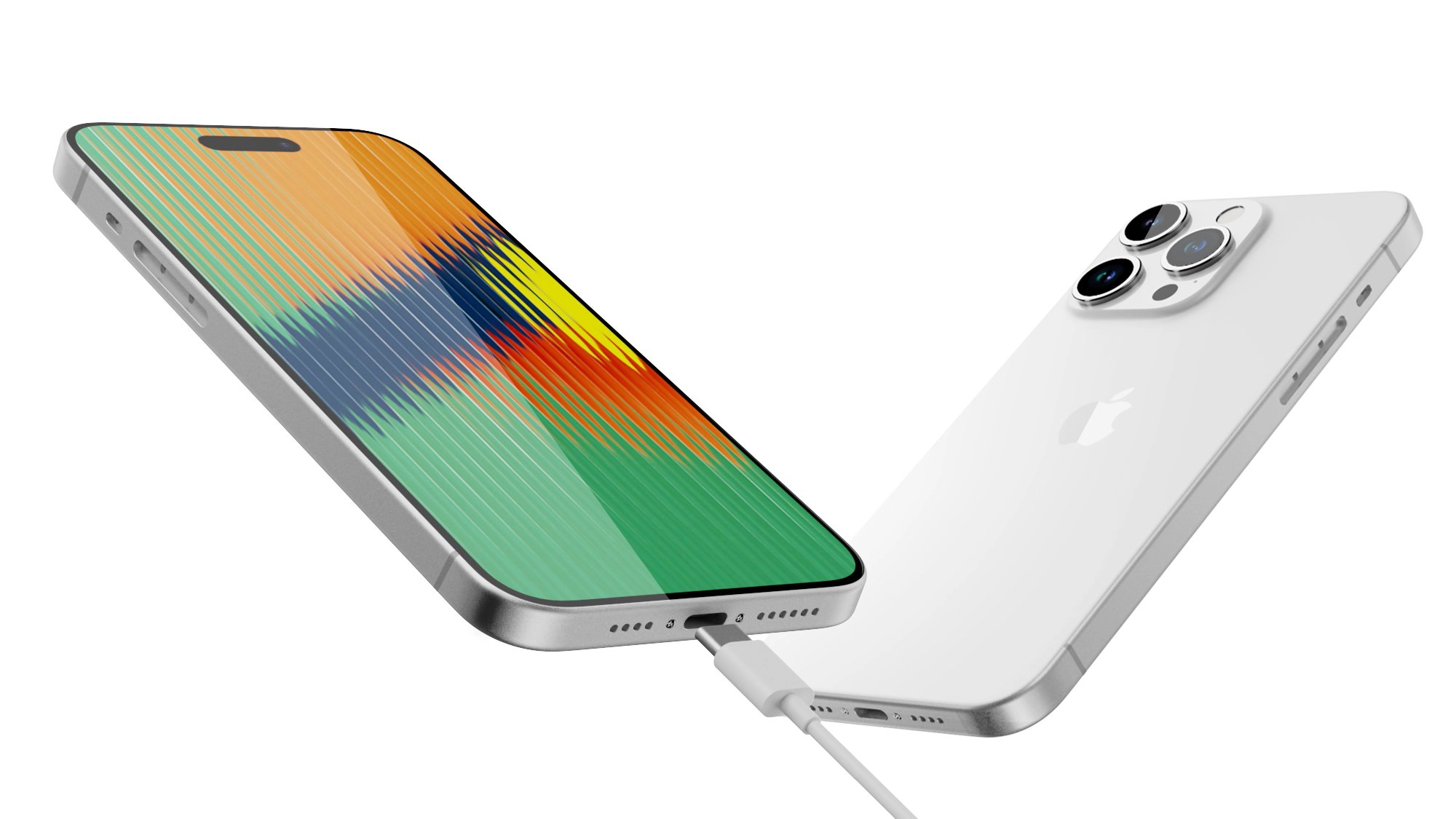
According to sources, production of the iPhone 15 screen has encountered unexpected errors, which could cause a delay in the release of the device.
Multiple sources have revealed that this year’s iPhone 15 lineup will still consist of four models, but there are some changes in the design of all models. Specifically, the new iPhone 15 series will feature the “Dynamic Island” design as the standard, including the basic version.
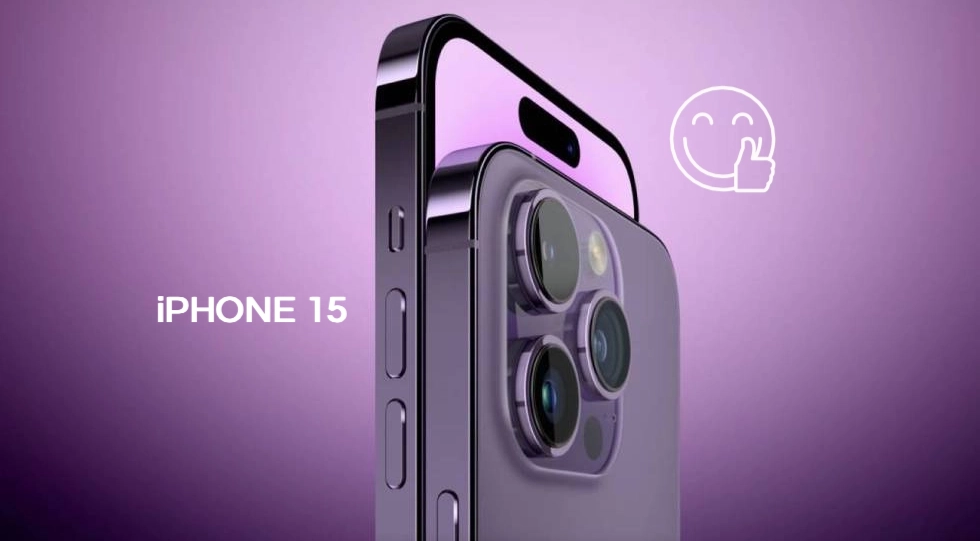
As reported by The Elec, BOE appears to have encountered a problem with light leakage during the production of the latest Apple smartphone model’s OLED screen. Therefore, it is difficult to participate in mass production of the first batch of OLED panels for the newest iPhone around June. This news also indicates that the backlight leakage issue appears in the iPhone models that BOE is involved in producing.
Apple has required OLED screen suppliers for the iPhone to use the edge light-blocking (ELB) design to prevent light leakage around the camera lens, which has caused difficulties for BOE in implementation. Reports suggest that BOE “apparently did not meet strict standards” as required by Apple.
It is predicted that the OLED screens produced by BOE will initially be used for repairing and refurbishing iPhones rather than being used for new phones. Therefore, Samsung and LG may still be responsible for producing the screens for the new iPhone.
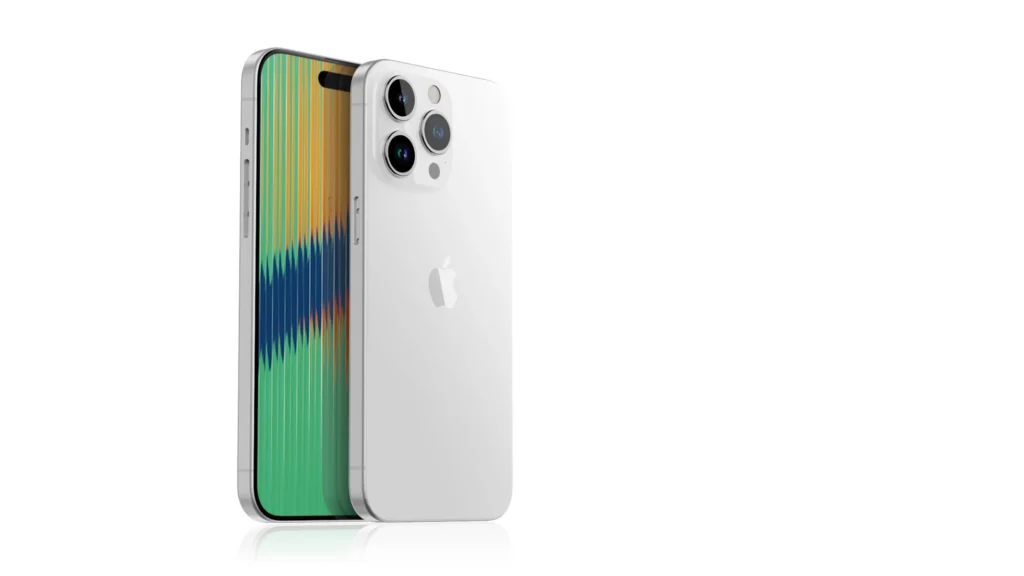
Interestingly, in January of this year, analyst Ming-Chi Kuo announced that the latest survey shows that BOE has beaten Samsung and won most of the screen orders for the iPhone 15 and 15 Plus.
If the development and production process goes smoothly in the coming months, BOE will be the largest screen supplier for the iPhone 15 and 15 Plus, accounting for about 70% of the supply (Samsung accounts for about 30%). With this latest news, the tech community is concerned that the iPhone 15 may not be released on time due to a lack of screens.
In response to the news, a representative from BOE stated that the company is continuing to expand or strengthen cooperation with Apple and other customers, and that disclosing too much information about a customer is inconvenient and specific announcements will be made in due course.
Mobile
In 2024, the market for foldable smartphones will experience significant growth.
The global market for foldable smartphones will undergo significant changes in the second half of 2023 and throughout 2024.
According to the latest report from Counterpoint Research, the global market for foldable smartphones has witnessed a 10% increase compared to the same period last year in the second quarter of 2023, reaching 2.1 million units. This growth stands in stark contrast to the overall global smartphone market, which experienced a 9% decline in shipments during the quarter, totaling 268 million units. Due to the ongoing Russia-Ukraine conflict and high global inflation, the overall smartphone market is expected to exhibit stagnant growth. However, the foldable smartphone segment continues to demonstrate strong and sustainable growth.
The context of foldable smartphones in the Chinese market presents a particularly attractive scenario. In the second quarter of 2023, overall smartphone sales in China declined by 4% compared to the same period last year, reaching 61.9 million units, due to recent economic challenges faced by the country, leading to reduced consumer spending. However, the foldable smartphone market in China achieved notable success, with a 64% increase compared to the same period last year, reaching 1.2 million units. China currently holds the largest market share in the global foldable smartphone market, accounting for 58.6% of the market.
The rapid growth of the foldable smartphone market in China is primarily attributed to the introduction of foldable devices tailored to the Chinese market, coupled with strong consumer demand for such products. This surge is driven by the launch of key products such as the Huawei Mate X3, vivo X Fold 2, and vivo X Flip, primarily targeting the foldable smartphone market in China.
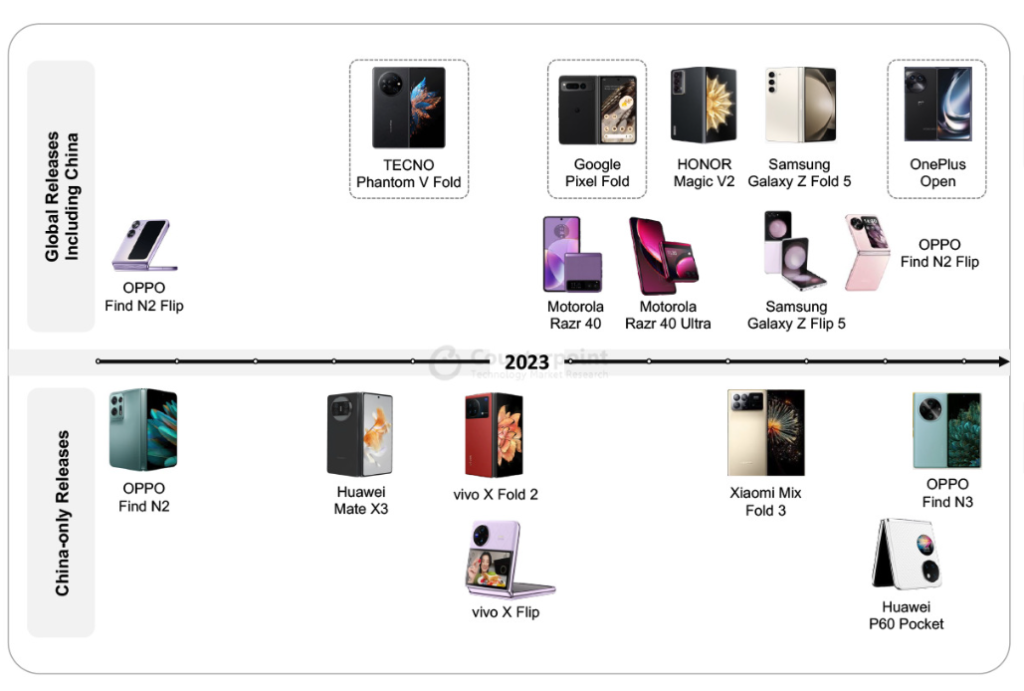
High-level analyst Jene Park from Counterpoint Research stated, “We believe that the frequent launch of foldable smartphones is changing the perception of Chinese consumers towards foldable products. As a result, Chinese consumers have easier and more frequent access to various foldable devices compared to any other market in the world. The continuous release of multiple foldable products is considered one of the key reasons why the foldable market in China continues to grow significantly compared to other markets.”
The global market for foldable smartphones will experience significant changes in the second half of 2023. Chinese manufacturers are expanding their international presence during this period, with notable releases including the Honor Magic V2, Oppo Find N3 Flip, and the unnamed OnePlus foldable device. Notably, Samsung’s Galaxy Z Fold 5 and Galaxy Z Flip 5, considered as some of the leading foldable products, were launched in August and are expected to gain significant market share in the second half of 2023.
Jene Park further added, “The global market for foldable smartphones is expected to witness significant growth in the second half of 2023, driven by the expansion of Chinese manufacturers. While Samsung’s market share may decrease due to increased competition, we believe it will be a natural outcome. However, competition among manufacturers typically expands the market scale for the products. We anticipate that the era of mass-market foldable smartphones will begin in 2024, primarily led by Samsung and Huawei with their entry-level foldable devices. These entry-level foldable products are expected to have a price range of around $600 – $700, making them more accessible to consumers.”
Read more: Galaxy Z Flip5 revealed in real-life images ahead of launch: Massive secondary display
Mobile
Keeping your Smartphone in this mode while going to sleep not only minimizes radiation but also promotes a restful sleep.
Mobile phones can have a negative impact on users’ sleep. However, making just a small change can help improve your health.
Mobile phones emit radiation, and radiation has the potential to increase the risk of cancer. However, the radiation emitted from your phone is not considered dangerous.
The National Cancer Institute of the United States also states that the radiation emitted from mobile phones, known as non-ionizing radiation, does not ionize, meaning it does not damage DNA. Furthermore, it is not the sole source of radiation in everyday life, as non-ionizing radiation is also emitted from radio and TV signals, microwave ovens, and Wi-Fi, among others.

Several large studies have been conducted to search for evidence of a relationship between mobile phones and cancer, but no analysis has been able to provide a definitive conclusion. Currently, there is no reason to believe that mobile phones cause cancer.
However, if you are concerned about radiation from your phone, you can activate Airplane Mode. According to the EducateEMF website, this mode will reduce the emission of non-ionizing radiation from your mobile device by disabling mobile signals, Wi-Fi, and Bluetooth connections.
In cases where it is necessary for work or if you are afraid of missing important calls or messages, you can place your phone at a distance from your bed. By doing so, you can avoid the potential hazards of phone waves while still receiving important notifications.
How far should you place your phone from your body to minimize radiation exposure?
The radiation from mobile phones is directly related to the signal strength of the mobile phone. In general, if the mobile phone signal is strong, the radiation will be low, and if the mobile phone signal is weak, the radiation will be high. In relation to this issue, if you want to reduce mobile phone radiation, try to maintain a distance.
Professor Zhang Guogang from the School of Life Sciences at Tianjin Normal University conducted an experiment:
To eliminate the influence of the electromagnetic radiation from the Earth itself, the radiation level in the experimental environment was measured as 0.3 milligauss before the experiment. Then, the radiation level of the same mobile phone was tested at different distances.
– 5cm away from the phone: 1 milligauss
– 10cm away from the mobile phone: 0.5 milligauss
– 15cm away from the mobile phone: 0.3 milligauss
In other words, after subtracting the ambient radiation of 0.3 milligauss, the radiation level essentially becomes 0 when the mobile phone is placed 15cm away from you. Therefore, the farther you are from the mobile phone, the lower the radiation level, or even no radiation at all.
Other dangers of sleeping next to a Smartphone
Although you don’t need to be overly concerned about getting cancer from sleeping next to a mobile phone, there is evidence suggesting that using a phone at night can negatively affect sleep quality.
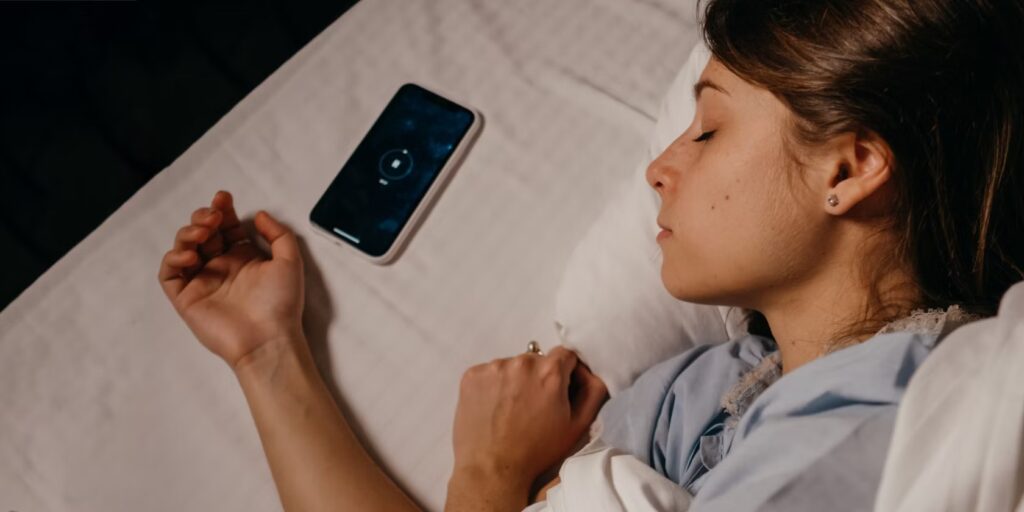
Accordingly, using a Smartphone before bedtime can make it harder for you to fall asleep. This is due to the combination of blue light suppressing melatonin and the stimulating content that we consume.
Another scenario is if you sleep with your phone nearby, it can also cause issues, such as noise. A beep or any other sound coming from the Smartphone is enough to wake us up from sleep.
According to a study conducted by British scientists, over 61% of respondents reported having poor sleep, and there is a clear correlation between smartphone addiction and poor sleep quality. Nearly 69% of those with a smartphone addiction habit reported having difficulty sleeping, compared to 57% of those who use smartphones but are not addicted.
Regardless of the specific methods, sleep duration has been disrupted, leading to a decrease in sleep quality. According to a study published in PLOS One in October 2018, you may sleep around 48 minutes less on average when there is a phone in the room compared to when there isn’t.
Therefore, to protect your sleep, which is crucial for the body’s restoration and energy replenishment for work and learning, experts recommend implementing a “bedtime routine.” This involves staying away from or turning off all technology devices one hour before sleep, as reported by CNN.
Mobile
Why is the iPhone battery icon yellow?
In addition to white, red, or green, the battery icon on the iPhone also has a yellow color, symbolizing the Low Power Mode which can slow down the device.
Many long-time iPhone users still find it unfamiliar when they see the battery icon on their phone turn yellow. This is an indication that the device is in Low Power Mode. Other familiar color indicators on the battery icon for users include white, which represents the normal state, red indicating low battery (below 20%), and green indicating that the device is charging.
According to Apple, the Low Power Mode can provide an additional three hours of usage for the iPhone, depending on the specific model.
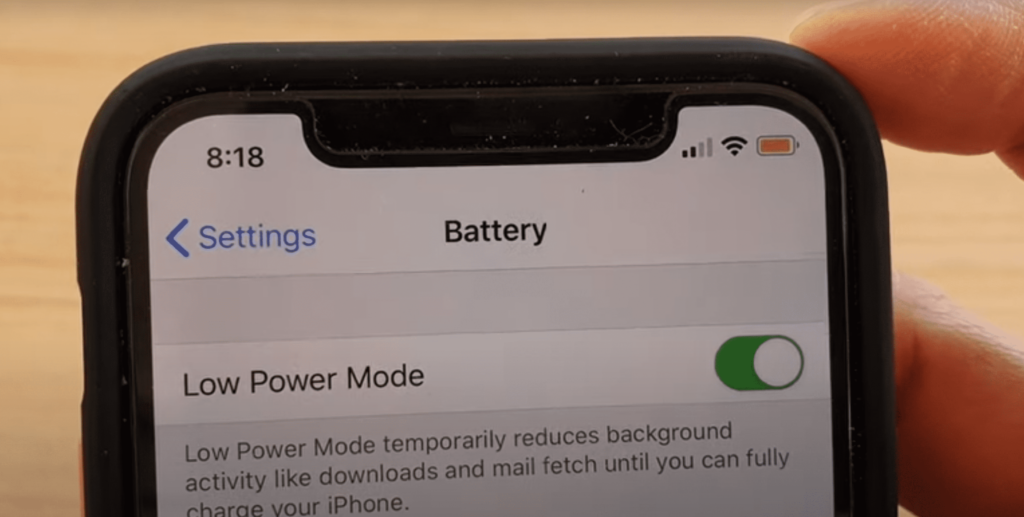
When the battery icon turns yellow, the iPhone experiences a noticeable decrease in performance and some features. For example, with iPhone 12 models, the device automatically disables 5G connectivity, while iPhone 13 and iPhone 14 models reduce the screen refresh rate, resulting in slower responsiveness to touch gestures. Most models also disable background app refresh, automatic downloads, and email fetching. The process of copying photos to iCloud is paused, and the screen brightness is reduced. Finally, the processor’s clock speed is lowered to consume less power.
By default, Low Power Mode is always turned off. In some cases, when the iPhone battery reaches 20% or lower, a prompt window will appear suggesting enabling Low Power Mode. Many users may tap without fully understanding the actual functionality, only to find their phone suddenly running slower.
To enable or disable Low Power Mode, users can access Settings, select Battery, and interact with the Low Power Mode option. By default, when the device is charged to 80% or above, this feature will be automatically turned off.
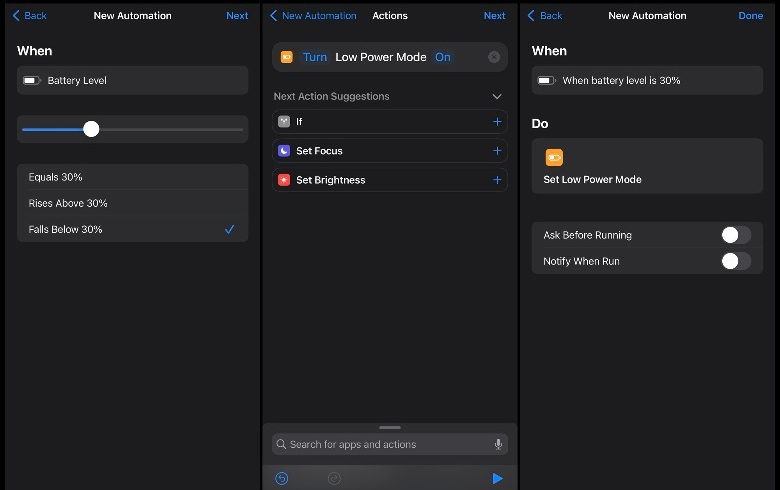
Battery saving mode on iPhone is not turned on automatically, but users can create their own commands through the Shortcuts application. In the software, select the Automation tab > Create personal automation > Battery level > Lower and adjust the slider to the desired level, select Next > Add task > Set low power mode > Next > uncheck Ask before running > Done.
Read more: Is Safari on your iPhone too slow? Try these 4 ways to speed it up.
-

 AI1 year ago
AI1 year agoAI only needs to listen to the sound of keystrokes to predict the content, achieving an accuracy rate of up to 95%
-

 AI2 years ago
AI2 years agoMusk aims to create a super AI to rival ChatGPT
-

 Entertainment2 years ago
Entertainment2 years agoSurprisingly, a single YouTube video has the potential to cause serious harm to Google Pixel’s top-of-the-line smartphone
-

 AI2 years ago
AI2 years agoUpon its debut, Google’s chatbot Bard dealt a cold blow to its very creator.
-

 Entertainment2 years ago
Entertainment2 years agoCS:GO Breaks Records with Surging Gamer Engagement and Increased Spending
-

 Crypto1 year ago
Crypto1 year agoExplore in detail about Web 3
-

 Tech1 year ago
Tech1 year agoHuawei has demonstrated to the world that making electric cars is as easy as assembling smartphones
-

 Entertainment1 year ago
Entertainment1 year agoRumors have been circulating about a live-action film about GTA, the creator of the series spoke out to confirm one thing.














Pingback: 89crypto.com - Xiaomi 13 Ultra official - Deal & Reviews